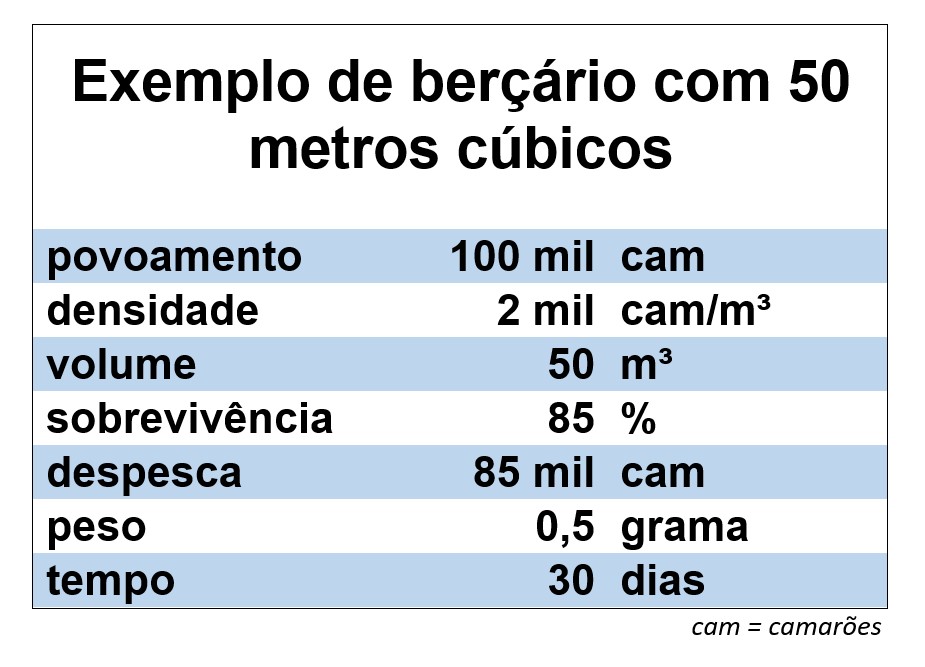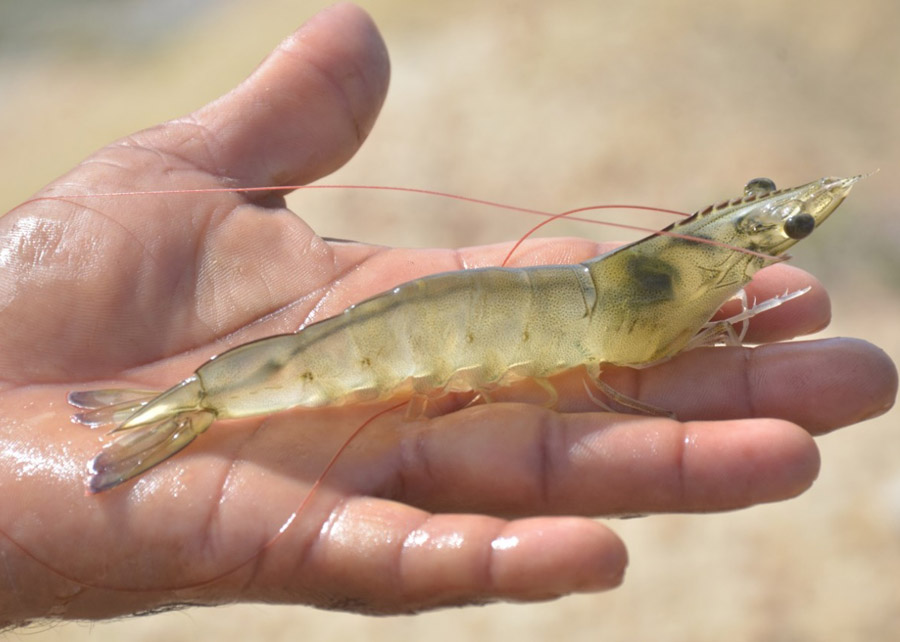Science defines simplified offshore sea shrimp farming model
Science defines simplified offshore sea shrimp farming model
|
Embrapa Mid-North (PI) defined the water composition required to raise Pacific white shrimp (Litopenaeus vannamei), allowing reproduction in offshore environments. As it is a sea species, it generally is cultivated in farms next to the coast. The advance for farmers is that the scientific investigation defined the ideal minimal doses of minerals like calcium, magnesium and potassium in the water, and a simplified model so that vannamei shrimp can be raised without the need for seawater.
The model is for the nursery stage in a symbiotic system (which allows the development of important natural foods for the development of the post-larvae) in captivity, in smallholdings. This system is the world's most used to produce the crustacean, as it improves the animals' food digestibility and absorption and stabilizes water quality.
The concentrations the study definedThe research results include the definition of the following concentrations per liter of water: salinity: 2.3%, calcium: 38 milligrams, magnesium: 96 milligrams, potassium: 48,3 milligrams, and 490.13 milligrams of total hardness (concentration of soluble calcium and magnesium in the water). Total alkalinity was set to 92.33 milligrams of calcium carbonate per liter. |
The studies were developed by the fishing engineer and Embrapa Mid-North analyst Valdemir Queiroz de Oliveira, for his Master's degree at the Federal University of Pernambuco (UFRPE), in Recife, PE, Brazil. The study was advised by the professors Alfredo Oliveira Gálvez and Luis Otávio Brito, and by the Embrapa researcher Alitiene Moura Pereira.
The importance of the rice bran
To conclude the study, whose partial results were presented at the IX Brazilian Congress of Aquaculture and Aquatic Biology (AquaCiência 2021) and at the XVII National Shrimp Fair (Fenacam 2021), Oliveira also used fermented rice bran.
In the laboratory experiment, for each cubic meter of water, he applied 20 grams of sieved rice bran, 2 grams of demerara sugar, 0.5 gram of probiotics (mix of bacteria Bacillus subtilis, B. licheniformis and B. sp.), 0.25 gram of ferment, and 4 grams of sodium bicarbonate. The water has to be previously sterilized.
The mix, according to the fishing engineer, was submitted to fermentation (anaerobic process) for 24 hours, and then to microbial respiration (aerobic process) for another 24 hours. It was later added to the cultivation water every two days, totalling seven applications (14 days) before the settlement with post-larvae. After the settlement, the mix was applied three times a week.
He explains why the use of rice bran is important in shrimp diets. “The bran is colonized by bacteria that balance the relationship between heterotrophic and nitrifying bacteria, allowing the stabilization of nitrogen compounds (ammonia and nitrate) at levels that do not harm shrimp growth. The bran increases the amount of beneficial bacteria in the shrimps' digestive system, which improves nutrient absorption and the Food Conversion Factor [amount of food that the animal eats to transform into one kilo of the animal's body weight,” he clarifies.
Intensive shrimp nursery systems like the symbiotic ones offer several advantages to farmers, according to Oliveira. “They require little water exchange, and offer higher water control and water reuse”, and thus prevent the loss of minerals and increase production cycles in the fattening stage. “The process - Oliveira states - ensures higher acclimation of the post-larvae to growing conditions, producing a more resistant shrimp with higher compensatory growth and better animal performance”.
Simplified production in captivity
 In parallel with his Master's dissertation, he created a simplified shrimp production model for smallholdings. The model consists of units with 50-m3 nursery tanks. Each one can produce 85,000 shrimp younglings every 30 days. This amount can populate a fishery of 850 square meters in an intensive system, with a density of 100 animals per square meter, with estimated harvest of 760 kilos of 10-gram shrimps every 100 days. Or a fishery of 5,600 square meters with a density of 15 shrimps per square meter, with a harvest of around 900 kilos of shrimps weighing 12 grams each, every 90 days.
In parallel with his Master's dissertation, he created a simplified shrimp production model for smallholdings. The model consists of units with 50-m3 nursery tanks. Each one can produce 85,000 shrimp younglings every 30 days. This amount can populate a fishery of 850 square meters in an intensive system, with a density of 100 animals per square meter, with estimated harvest of 760 kilos of 10-gram shrimps every 100 days. Or a fishery of 5,600 square meters with a density of 15 shrimps per square meter, with a harvest of around 900 kilos of shrimps weighing 12 grams each, every 90 days.
With a nursery tank, the farmer can populate a fishery every 35 days, and thus shrimp will be produced in the farm every month. The installation of three fisheries is necessary.
Wells ensure infrastructure
Brazil's countryside has infrastructure for shrimp production in captivity. According to data from Brazil's Geological Service (CPRM), the country had 348,869 artesian wells by May 10, 2022. The Brazilian Northeast had the largest number: 190,100, followed by the Southeast (60,393), South (56,490), North (28,532) and Midwest (13,354).
With salinity close to 0.5% (combined with the variables of water quantity and quality), which Oliveira states that satisfactorily ensures a good shrimp yield, there are 83,606 wells spread in the five regions of the Country: 63,915 in the Northeast; 10,113 in the South; 7,969 in the Southeast; 818 in the North; and 791 in the Midwest. “The infrastructure with wells already ensures the minimal conditions to produce quality shrimp in smallholdings”, Oliveira said.
Fernando Sinimbu (654 MTb/PI)
Embrapa Mid-North
Press inquiries
meio-norte.imprensa@embrapa.br
Phone number: +55 86 3198-0500
Translation: Mariana Medeiros (13044/DF)
General Secretariat
Further information on the topic
Citizen Attention Service (SAC)
www.embrapa.br/contact-us/sac/




